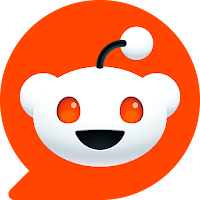This is one of the packets of incense from a cardboard box I brought down from the attic after going up there ghost hunting after Chrissie heard noises (I think it was a neighbour's cat which had crawled though the gaps in the partitions between the attics - the partitions were not part of the original Victorian building work, so don't neatly fit at the angles). The box is a curious mix of incense I've reviewed and, like the
Satya Champa I reviewed yesterday, incense I've not reviewed, even though I've had the packets for several years. I've just re-reviewed
A. S. Agarbathi Works Ayurvedic Relaxation and enjoyed that (though was a little disappointed that the scent on the burn was not more like the scent on the stick), so I am looking forward to burning this, though my expectation is that I will have a similar experience.
I was a little surprised when looking for UK outlets, that the shop I bought them from was no longer selling them, and that currently (2025) there appears to be no UK or US shop selling them. A. S. Agarbathi Works Ayurvedic incense is, however, fairly widely available in the EU, though UK and US buyers will have to pay extra shipping costs.
The use of the Ayurvedic name attached to the incense packs is unclear. There is a relationship between Ayurveda and incense. Ayurveda is a traditional approach to healing used in India, which is similar to other traditional healings in that it uses herbs and meditation; and incense can play a part in the healing processes. And incense, in turn, can be made according to Ayurvedic ingredients. So there is an attractive symbiosis. Various modern studies on classic pure incense ingredients such as frankincense (not incense sticks, but the pure resin)
indicate positive calming and healing properties. So, while modern science is uncertain about embracing all aspects of Ayurveda (
particularly the use of metals), there are elements, such as incense or aromatherapy, which have positive indications. But is the use of the name here on this incense packet meant to suggest that the incense was made following Ayurvedic methods and/or that it can be used as an Ayurvedic medicine? On the pack it has the words: "Natural Ingredients Natural Results", which suggest it might at least be implying the incense is Ayurvedic, while not explicitly saying so. It also says "Export Only", which may suggest that the Ayurvedic name is being invoked for marketing purposes, to impress Western buyers. Rather like the term "Temple Incense" is used on incense sold to Westerners, but not when it is sold to Indian customers. Up to the buyer themselves to decide how much if at all these sticks are genuinely Ayurvedic. I mainly burn incense for the pleasure of the scent, or for other mundane purposes like covering up bad smells. But I am aware that certain scents do calm me, or excite me, or help me focus. So I am quite accepting of the Ayurvedic principles of incense, including incense that may not be made from pure incense ingredients. I don't think an incense has to be made following Ayurvedic principles and/or be named Ayurvedic for the scent to have an effect. I am aware that
synthetic lavender has the same calming effect as natural lavender, while a natural plant which is often used in place of lavender as it smells the same, does not have that calming effect. Anyway - each to their own, make of the Ayurvedic name on the packet what you will.
As with the
Ayurvedic Relaxation, this Ayurvedic Meditation has a very attractive fragrance on the stick. Sandalwood, honey, flowers, a little spice, and a little bit of warm lamb's wool. It's a fairly typical "masala incense" fragrance. If you have collected and burned a number of different Indian masala incenses you will be familiar with this scent. I mostly find this scent on incense made in Bangalore. It is a traditional / old-fashioned scent. I like it. Though, after burning a few hundred versions of this sort of incense over the years, it no longer excites me as it once did. I still like it, but I am more interested these days in incense which does a little more than do what hundreds of other incense versions do. Essentially if I wanted this sort of scent, I might as well light up a Satya Nag Champa, which does what this does, plus a bit more. And is cheap and easy to buy on Amazon or even in many corner shops these days.
There is a somewhat resinous scent on the burn. A little spicy, and a little too rich in terpenes for my taste - I can only take so many of these sticks in one day. This is the fourth today, and I have the start of a headache. Having said that, and having moaned about how unadventurous and run of the mill it is, I do like this. It warms the room, cleanses it, and leaves a gentle energy. It's burning incense like this which causes post officer workers and delivery people and door to door salespeople to say how nice our house smells when they are standing on the door step, and we maybe haven't even burned any incense for a few days because we've been away. So, yes, niggles and grumbles aside, A. S. Agarbathi Works Ayurvedic incense does the job.
Date: Dec 2025 Score: 38
***







































